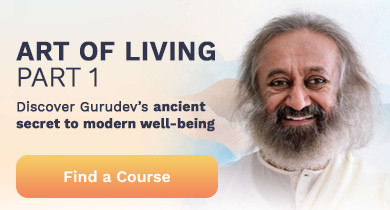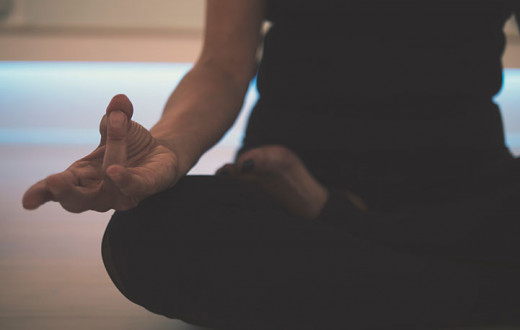A passionate singer and guitarist who loves experimenting with music, Sahil Jagtiani started his career as a rock musician before it took an interesting turn. Having learned the breathing and meditation techniques of The Art of Living, he took to devotional songs, a genre he had never touched before. Uplifting people and bringing spirituality to the youth through his songs then became his life’s purpose.
A regular meditator for 16 years, Sahil believes that meditation is his most important tool in creating music that touches people’s heart. It brings him in touch with his unending source of creativity and patience, which adds to the quality. How does meditation help? Hear it from the magician who can bind you in his musical spell!
Does meditation and music complement each other?
Music helps me find peace instantly. No matter how scattered my mind might be, when I listen to a particular form of music, it relaxes my mind and takes me to a meditative state. Also, from meditation comes great music. When I am in a silent spot, I get inspiration to produce good-quality music. It just happens.
There are two aspects to meditation and music in terms of inspiration: the creative and performance aspects.
Most of my songs have come from a meditative state of mind. They have not come to me sitting down with a guitar and intellectually analyzing which note to play. When I am in meditation, a sound or phrase might come to me and then I develop that into a song. This is the creative aspect. Most of my well-known songs, such as Gurudev, Parmeshwaram, Om Namoh Narayana, and Guru Avtar, are inspired by silence.
Then there is the performance or the recording aspect to it. Recording involves a lot of details. You lay down different tracks and you might have to retake. However, while recording some of my songs, I have been in a meditative state and entire songs have come out in one take. Being in a meditative state drives the perfect recording. That’s how music and meditation complement each other.
Gurudev Sri Sri Ravi Shankar says "Deep silence is the mother of creativity". Do you concur with this? Please share a few instances.
Yes, this is true, deep silence is the mother of creativity. Before learning Sudarshan Kriya and meditation, I was scared of going beyond my limits and experimenting. But once I started practicing meditation, my mind opened up to different forms of music, especially Indian ragas (notes) and shlokas (Sanskrit verses).
A lot of composers and singers I know practice Sudarshan Kriya and meditate regularly because it gives them an extra edge of peace and tranquillity, from which springs more creativity. You can write poems; you can compose; you can sing. Your hidden talents come out. Meditation is like a pranic (energy) bomb that amplifies whatever you do. It takes you to your core, which is the source of unending creativity.
Can meditation be a natural outcome of listening to music?
Yes, without a doubt. Sometimes, people automatically meditate to chanting or sublime music, hopefully not when they are driving a car (laughs).
I know many people who have never meditated, but when they listen to shlokas or bhajans (spiritual songs) and close their eyes, they have meditative experiences. They say, “Wow, we don’t know where we went or what happened to us. We just shut our eyes and the next moment, we were awake. And we felt so happy and refreshed!”. That is meditation.
I would also recommend people to learn to meditate properly from a Sahaj Meditation teacher and then try it with music. There are many meditation-music tracks too. One of the guided meditations by Gurudev Sri Sri Ravi Shankar, a spiritual leader and humanitarian, has flute music and the sound of waves gently crashing in the background. These are all soothing sounds. They can facilitate a meditative state. Sometimes, music also helps settle the mind when there is deafening silence or a lot of noise in the background,which might be disturbing.
Is it alright to meditate to music or is silent meditation more effective?
In either case, the end product is silence. Whether you are silent and you achieve silence or you are listening to music and you feel silent, the end product should always be silence. If you are doing it without a music track, the silence should not be torturous. For example, asking newcomers to meditate without music or guided meditations might dissuade them from meditating.
When you listen to mantras, you have something to hold onto—something that steadies the mind. Music is like a crutch that helps your mind gradually move into silence. While slipping into a meditative state without the help of sound or music is the ultimate, beginners might find this difficult.Music helps facilitate meditation in such situations.
Is there a way to know when to use music for meditation and when to sit for silent meditation?
If you have done Sudarshan Kriya or you are feeling peaceful otherwise, you don’t need music. But if you have come back from a hard day at work and your mind is scattered, music definitely helps. Chanting Om Namah Shivaya or listening to Rudram chanting also helps calm the mind before meditation. There is no hard-and-fast rule. You have to see what the state of your mind is at that point and then cater to it.





























